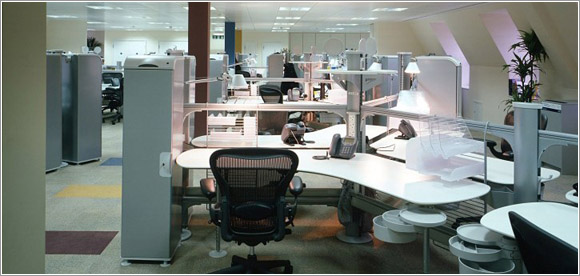Although a neat and organized workspace is a challenge in today’s busy world, maintaining an organized and productive space is well worth the undertaking. It very well makes up in terms of time saved, morale and productivity boost and improved service delivery.
Messy desks and time spent looking for misplaced items cost corporate America $177 billion annually, according to a 2010 study by Brother’s International. Another survey found 87% of workers admitting that they feel less productive when their space is cluttered.
An employee is only as efficient with accomplishing their tasks as is their ability to find the right tools or items at the right place and time.
The right design can help overcome this obstacle.
According to Barbara Hemphill, an organizational expert and founder of Productive Environment Institute, most cases people’s disorganization can be related to their disorganized working environment, whether it is their department or the entire company. The top most reason for this disorganization on the company level can be attributed to the senior management’s lack of dedication to this problem.
Key Elements Fostering Efficiency
Workplaces today are being perceived as a space that fosters creativity and transparent communication. And, organizational effectiveness doesn’t mean utilizing more space, but it means using the physical space more wisely.
To make a business productive and efficient, three key elements require understanding:
1. People
The most importance piece of the puzzle comprises the people in your organization. You are only as efficient as your least-efficient employee. His or her behavior is essential to improving productivity and efficiency. And the behavior is enhanced by the work environment itself and that person’s open communication with all levels of management.
2. Systems
The easiest and most effective way to save time and increase efficiency is to have core systems and procedures in place. Creating and helping your employees implement these systems will lead to improved performances, better sales, and more customer satisfaction.
3. Tools
No productive environment is complete without the right set of tools. Whether these tools are high-tech equipment or simple desk organizers, utilize them in your organizational design. Provide flexible organizers that the employees can then use in their mini-spaces (or workstations) as they please and function. Enabling employees with these tools will maximize their efficiency.
Traditional Tools Influence Design
Though technological advances are being adopted by organizations all around the world, paper still takes the top most spot as the tool of the trade. Today’s organizational success is based on team effectiveness and a lot of the team’s valuable time is spent in looking for important information due to duplication, misplaced or lost papers.
So, whilst designing an effective organization incorporating the above criteria, they need to also take into account paper storage, retrieval, and disposal. The more accessible the paper disposal guidelines and tools (like shredders or recycling bins) are to the work area the more they will be used. Thus, saving the company time, physical space, money and legal complications.
Employing Organizational Design Today
These key elements interact to achieve the purpose of the business organization, which in turn relates to the creation of the yield that has an economic impact on the company. The design must be accomplished to meet the purpose of the organization. Thus, you cannot design a work environment without understanding the organizational structure, purpose, and the three elements that work together.
Design with these fundamental attributes and the result will be a highly efficient, effective, and happy workspace:
- Reflect the goals, purpose, and culture of the organization
- Maximize organic, and multi-directional communication
- Maintain equilibrium between flexibility, privacy, and collaboration
- Accommodate multiple generations of workers and their work styles
- Encourage high employee engagement
With these strategies in mind, you can better create a healthy, positive, and productive environment where people can evolve and thrive.




